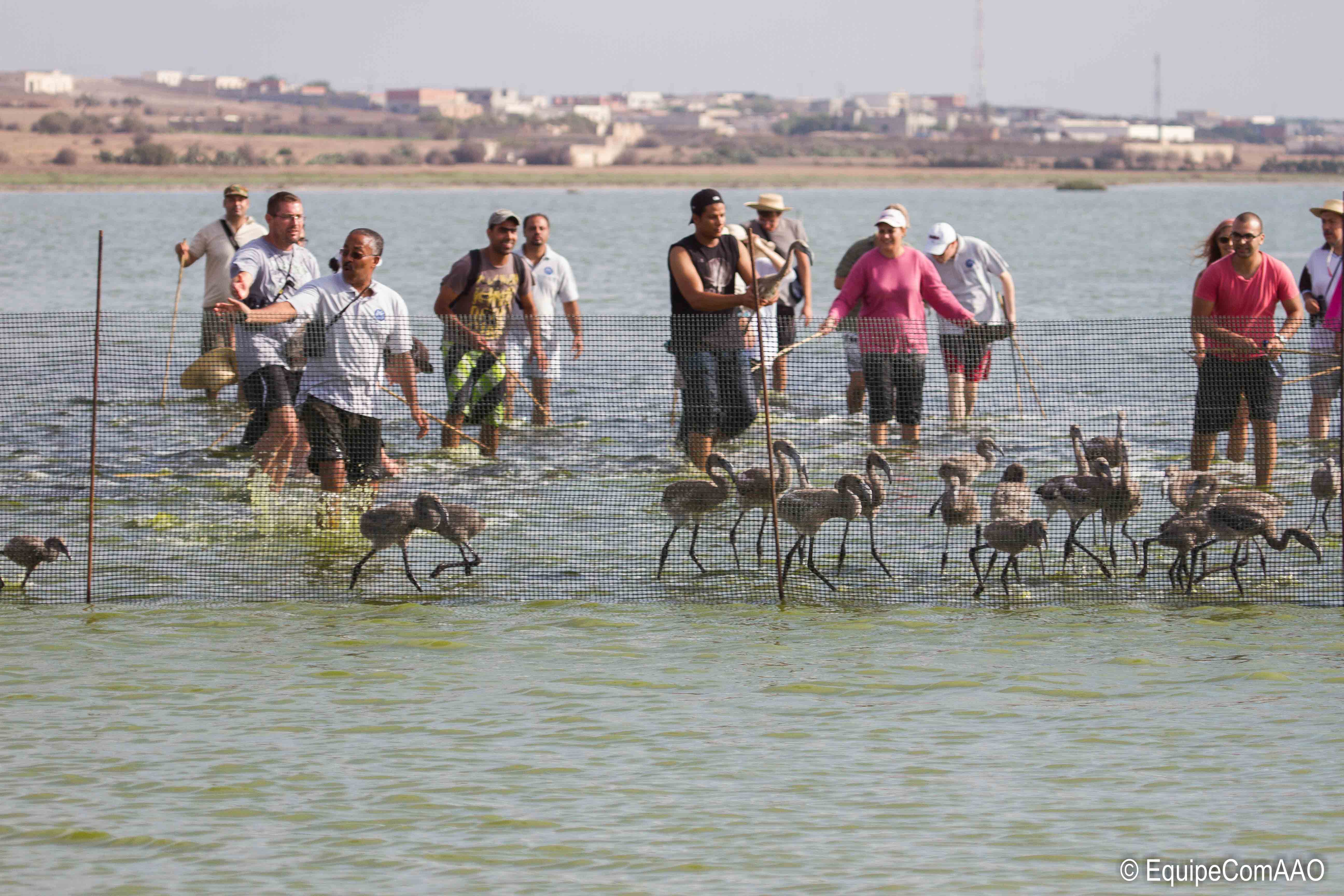 On 10 August 2014, more than sixty people from the Tunisian association “Les Amis des Oiseaux” (AAO—bird protection society), the Regional Activity Center for Specially Protected Areas (RAC/SPA), the Tunisian coastal protection and development agency (APAL), the Tunisian nature and environmental protection association, Korba (ATPNE, Korba), as well as the Directorate General of Forests (DGF), the Tour du Valat, and the Critical Ecosystems Protection Fund (CEPF), met at the Korba lagoon, in Cap Bon, to participate in the ringing of Greater Flamingo chicks. An unprecedented event in Tunisia!
On 10 August 2014, more than sixty people from the Tunisian association “Les Amis des Oiseaux” (AAO—bird protection society), the Regional Activity Center for Specially Protected Areas (RAC/SPA), the Tunisian coastal protection and development agency (APAL), the Tunisian nature and environmental protection association, Korba (ATPNE, Korba), as well as the Directorate General of Forests (DGF), the Tour du Valat, and the Critical Ecosystems Protection Fund (CEPF), met at the Korba lagoon, in Cap Bon, to participate in the ringing of Greater Flamingo chicks. An unprecedented event in Tunisia!
The Greater Flamingo’s distribution area covers the entire Mediterranean Basin, and it can be observed in nearly all wetlands in Tunisia, in function of the water level, salinity, and availability of food. Up to 70,000 individuals winter there, and this includes many young birds that were born in Europe or North Africa (Algeria), and stay in Tunisia for the first three or four years of their lives.
Almost every year, flamingos try to nest in wetlands in central and northern Tunisia (Sebkhet Ariana, Sebkhet Sejoumi, Salines de Thyna, etc.). However, they rarely succeed, either because they are young, inexperienced birds, or because they are often disturbed in spite of the laws that are supposed to protect them. The last significant nesting observed in Tunisia goes back to 1991, when a colony of 4000 pairs, with 600 to 700 chicks was observed in Garaet Sidi Mansour, in the Governorate of Gafsa. In 2007, another small colony was observed, with 17 young flamingos seen in Salines de Thyna.
For the first time ever, a small colony has nested on the Korba lagoon, where 45 chicks were captured, ringed, and released successfully. The Tour du Valat was present, and was able to provide precious assistance to its Tunisian partners thanks to its extensive experience in organising Greater Flamingo ringing operations in the Camargue since the 1970s.